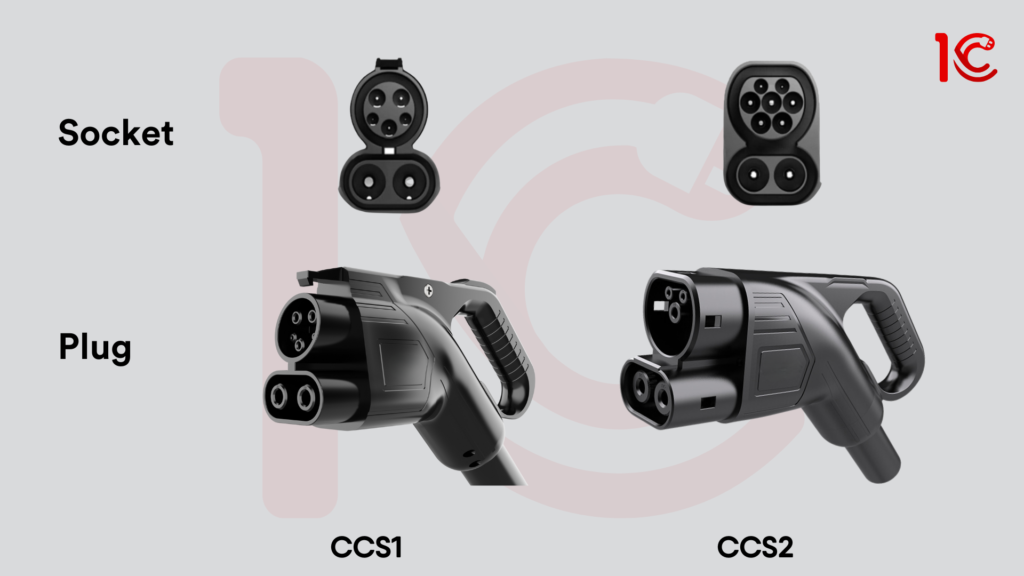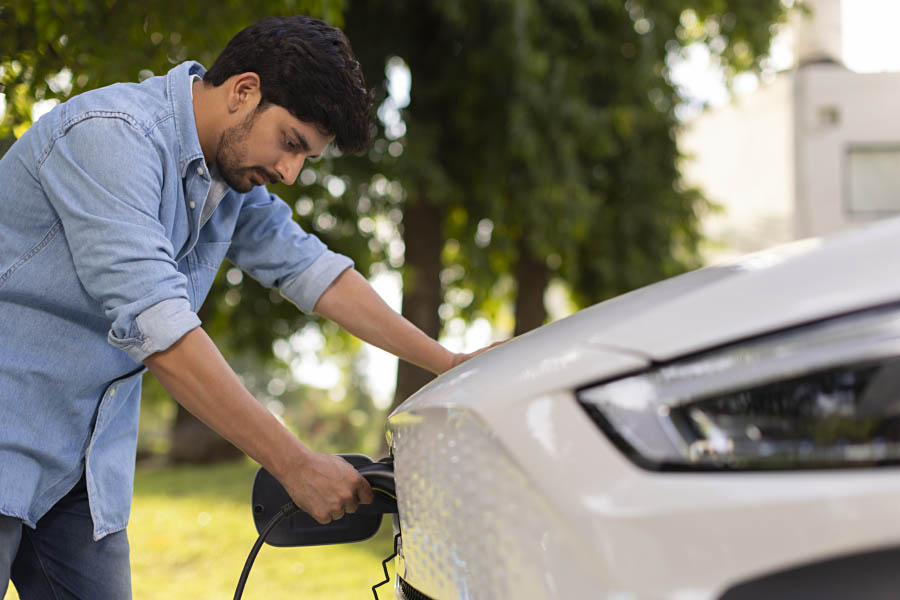Menu
Menu

The CCS, which is an abbreviation of Combined Charging System, is an electric vehicle charging connector that integrates both AC and DC charging capabilities. It allows for versatile charging by accommodating various power levels. The CCS port is designed to streamline the charging process by combining multiple functionalities into a single connector that provides convenience for electric vehicle owners. This port is commonly used in Europe, India, and other international regions.
CCS are divided into two types, which are CCS type 1 and CCS type 2 or CCS2:
CCS1 is an EV charging standard with combined AC and DC capabilities in a single connector. It has a slow AC plug and a two-pin DC plug for fast charging, along with two additional DC pins. CCS1 aims for standardised and versatile charging to enhance the global EV charging infrastructure.
CCS2, or Combined Charging System 2, is a global electric vehicle charging standard used in Europe, India, and other regions. It integrates AC and DC charging into one connector, and with a three-phase AC plug, it allows higher charging capacities. Like CCS1, it includes two extra DC pins for fast charging, contributing to a standardised and efficient charging infrastructure for electric vehicles.
Charging Standard | Maximum Charging Speed | Efficiency |
CCS1 | 50-150 kW | 90-95% |
CCS2 | 50-350 kW | 90-95% |
62.5-400 kW | 90-95% | |
Tesla Supercharger | 250 kW | 90-95% |
The charging standards vary in maximum charging speed, with CCS2 leading in speed, followed by CHAdeMO and then CCS1. It’s necessary to consider that the actual charging speed depends on the car’s battery capacity and capabilities. Despite different speeds, all standards maintain similar efficiency levels, converting grid energy into usable power for the vehicle.

The key differences in the physical connector design between CCS1 and CCS2 focus on aspects such as charging plug size, communication protocol, cooling system, charging speed, locking mechanism, and the ability to accommodate both AC and DC charging in one connector.
Feature | CCS1 | CCS2 |
Charging Plug Size | Larger compared to CCS2 | Smaller compared to CCS1 |
Communication Protocol | Smaller and less speedy | Larger and more speedy |
Cooling System | Not liquid-cooled | Liquid-cooled |
Charging Speed | Lower power transfer rates | Higher power transfer rates |
Locking Mechanism | Standard locking mechanism | A more secure locking mechanism |
AC and DC Charging in One Connector | Requires a separate connector for AC | Combines AC and DC charging in one connector |
For electric vehicle drivers, it is important to ensure compatibility between your vehicle and available charging stations. While CCS1 and CCS2 share the same DC pin design and communication protocols, they are not interchangeable. If your EV has a CCS1 connector, it won’t work at a CCS2 charging station and vice versa.
Fortunately, many newer EV models come with both CCS1 and CCS2 connectors, which provide flexibility in selecting a charging station. Some charging stations are also being upgraded to feature both connectors, expanding fast charging options for EV drivers.

The charging standard used in India is the indigenous ISI7017, which is a collaborative effort involving NITI Aayog, the Department of Science and Technology, Ather Energy, and various stakeholders. This standard uniquely combines AC and DC for Low-Emission Vehicles (LEVs) and focuses on interoperability for different EV models and charging infrastructure providers. However, it does not mandate EV makers to follow a uniform standard, potentially leading to range anxiety and impacting the faster adoption of EVs in India.
Source: Indian Express

Both CCS1 and CCS2 connectors have a versatile charging capacity, which ranges from 50 kW to 350 kW of DC power and makes them favoured standards for European and American automakers, including Tesla. The actual charging power within this range depends on the specific vehicle’s battery capacity and the charging station’s capabilities.
In comparison, the CHAdeMO connector has a potential power delivery of up to 200 kW, but it’s gradually being phased out in Europe. China is developing an enhanced CHAdeMO version capable of delivering up to 900 kW. The latest CHAdeMO iteration, ChaoJi, supports DC charging with over 500 kW, posing a potential competitor to CCS2. India and South Korea have shown keen interest in ChaoJi, indicating its potential as a dominant standard in the future.
The CCS is crucial for EV charging, accommodating both AC and DC capabilities. Differences between CCS1 and CCS2 highlight design variances, charging speeds, and efficiency, underscoring the importance of compatibility awareness for EV users. India introduces its EV charging standard, ISI7017, while global standards like CCS shape the charging landscape. The versatility of CCS1 and CCS2, along with developments like CHAdeMO’s evolution, adds to the competitive dynamics. As the EV industry advances, understanding charging standards is essential for efficient charging experiences.
© 2024 Massive Mobility Private Limited. All rights Reserved